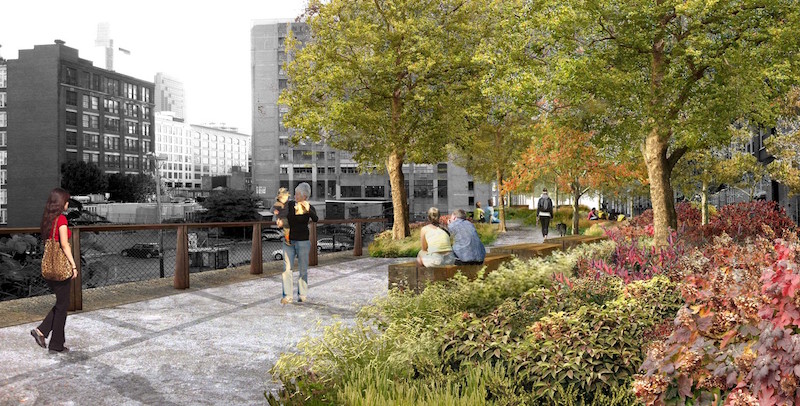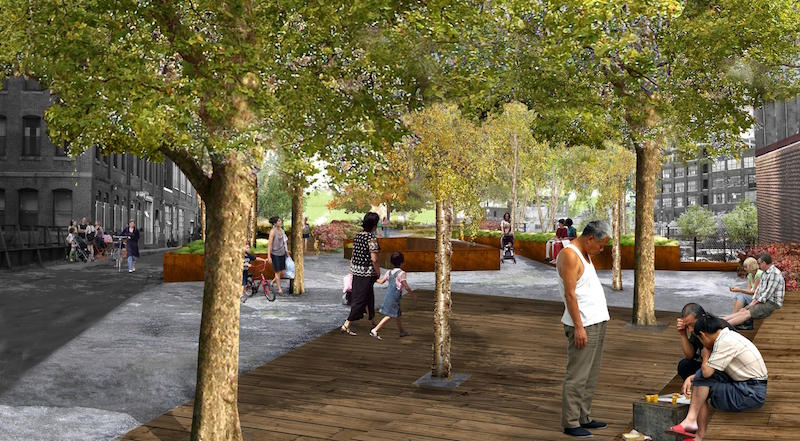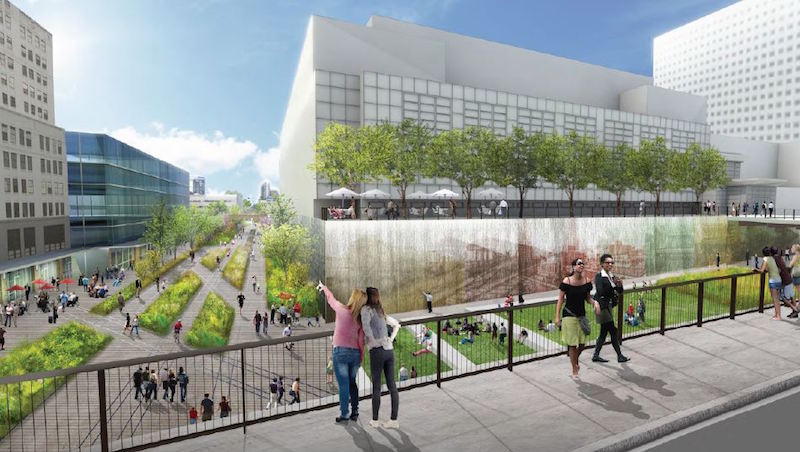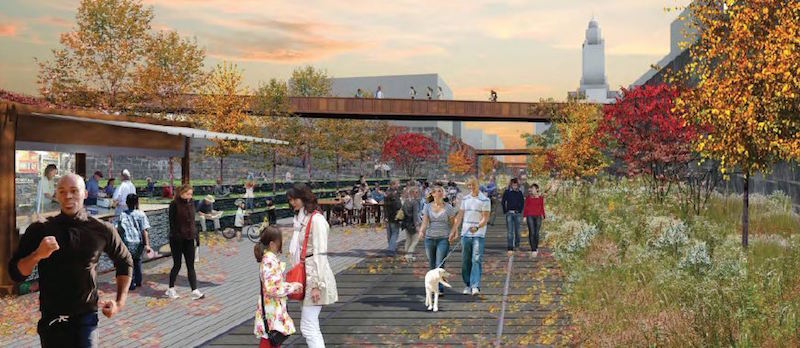Philadelphia will soon be getting its own version of New York’s popular High Line park as construction on the first phase of The Rail Park will begin by the end of the current calendar year.
The project will transform the tracks of the old Reading Railroad into a 25,000-sf linear park. The park will have green space, lighting, walking paths, and benches and cost $10.3 million to build.
The park is expected to spur new development in the surrounding areas in the same way economic development has sprung up along the High Line. The first phase of the transformation will focus on improvements in the 1200 block of Noble Street and the viaduct bridges up to Callowhill Street. This phase is expected to be completed by early 2018.
When completed, The Rail Park will stretch for three miles across 10 neighborhoods and 50 city blocks. It will run underground and overhead and be divided into three separate sections: the Viaduct, the Cut, and the Tunnel. The first phase is where the Viaduct meets the Cut. Construction will work outward and onward from there, according to the park’s official website. When completed, the park will connect Fairmount Park to Center City.
Phase one is almost completely funded thanks to a $3.5 million grant from the state. More funds still need to be secured before construction begins, but officials are confident the project will meet its requirements before 2017.
 Rendering courtesy of The Rail Park
Rendering courtesy of The Rail Park
 Rendering courtesy of The Rail Park
Rendering courtesy of The Rail Park
 Rendering courtesy of The Rail Park
Rendering courtesy of The Rail Park
 Rendering courtesy of The Rail Park
Rendering courtesy of The Rail Park
 Rendering courtesy of The Rail Park
Rendering courtesy of The Rail Park
Related Stories
Urban Planning | Apr 12, 2024
Popular Denver e-bike voucher program aids carbon reduction goals
Denver’s e-bike voucher program that helps citizens pay for e-bikes, a component of the city’s carbon reduction plan, has proven extremely popular with residents. Earlier this year, Denver’s effort to get residents to swap some motor vehicle trips for bike trips ran out of vouchers in less than 10 minutes after the program opened to online applications.
Urban Planning | Apr 12, 2024
New York City’s safest year for pedestrians due to concerted effort of street redesign, speed restrictions
In 2023, New York City recorded its safest year for pedestrians since record-keeping began in 1910. In a city of 8.5 million people, 101 deaths were due to vehicles striking pedestrians, less than one-third the number of the early 1990s. New York City ramped up its efforts to make walking and biking safer in 2014 when the city reduced its speed limit to 25 miles per hour.
Codes and Standards | Apr 8, 2024
Boston’s plans to hold back rising seawater stall amid real estate slowdown
Boston has placed significant aspects of its plan to protect the city from rising sea levels on the actions of private developers. Amid a post-Covid commercial development slump, though, efforts to build protective infrastructure have stalled.
Mixed-Use | Apr 4, 2024
Sustainable mixed-use districts: Crafting urban communities
As a part of the revitalization of a Seattle neighborhood, Graphite Design Group designed a sustainable mixed-use community that exemplifies resource conversation, transportation synergies, and long-term flexibility.
Codes and Standards | Mar 18, 2024
New urban stormwater policies treat rainwater as a resource
U.S. cities are revamping how they handle stormwater to reduce flooding and capture rainfall and recharge aquifers. New policies reflect a change in mindset from treating stormwater as a nuisance to be quickly diverted away to capturing it as a resource.
Urban Planning | Mar 17, 2024
A new report surveys city dwellers about urban living
Architects are rethinking the city of the future in terms of relieving resident challenges.
MFPRO+ Special Reports | Feb 22, 2024
Crystal Lagoons: A deep dive into real estate's most extreme guest amenity
These year-round, manmade, crystal clear blue lagoons offer a groundbreaking technology with immense potential to redefine the concept of water amenities. However, navigating regulatory challenges and ensuring long-term sustainability are crucial to success with Crystal Lagoons.
Urban Planning | Feb 5, 2024
Lessons learned from 70 years of building cities
As Sasaki looks back on 70 years of practice, we’re also looking to the future of cities. While we can’t predict what will be, we do know the needs of cities are as diverse as their scale, climate, economy, governance, and culture.
Healthcare Facilities | Jan 7, 2024
Two new projects could be economic catalysts for a central New Jersey city
A Cancer Center and Innovation district are under construction and expected to start opening in 2025 in New Brunswick.
Sustainability | Jan 2, 2024
Los Angeles has plan to improve stormwater capture and source 80% of water locally
Los Angeles County’s Board of Supervisors voted for a plan to improve stormwater capture with a goal of capturing it for local reuse. The plan aims to increase the local water supply by 580,000 acre-feet per year by 2045.

















